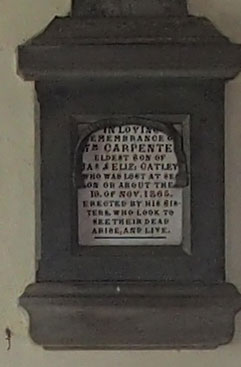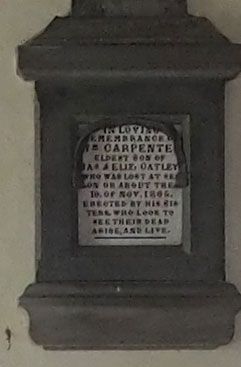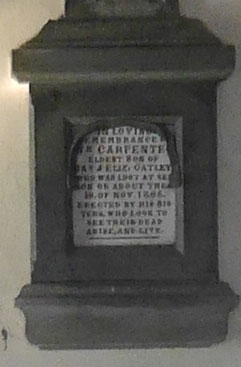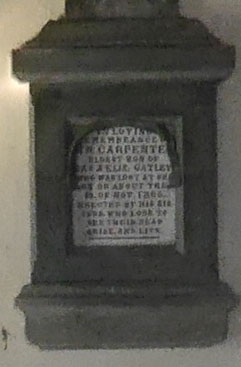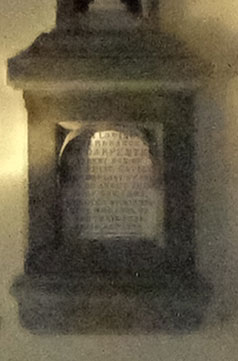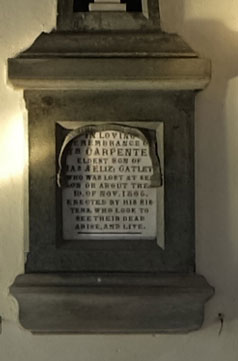Panasonic Lumix GF6 review
-
-
Written by Ken McMahon
Quality
Panasonic Lumix GF6 vs Olympus EP5 vs Fujifilm XM1 quality JPEG
To compare real-life performance I shot this scene with the Panasonic Lumix GF6, the Olympus PEN E-P5, and the Fujifilm X-M1 within a few moments of each other using their best quality JPEG settings; RAW results will follow on the next page.
To eliminate quality differences due to lens factors I used the Panasonic Lumix G Vario 14-42mm f3.5-5.6 II on both the Lumix GF6 and the PEN E-P5. The X-M1 was fitted with the new Fujinon 16-50mm f3.5-5.6 OIS kit lens
For the Lumix GF6 and PEN E-P5 the lens was set to its 14mm (28mm equivalent) wide angle setting. At its wide angle setting, the 16-50mm Fujinon lens has an equivalent focal length of 24mm and the X-M1 sensor has a 3:2 aspect ratio compared with 4:3 on the Micro Four Thirds models. I zoomed in marginally with the X-M1 to produce an equivalent vertical field of view.
All three cameras were set to Aperture Priority exposure mode with the senstivity set manually to the base ISO sensitivity setting.
The image above was taken with the Panasonic Lumix GF6. The GF6 was mounted on a tripod and the stabilisation was turned off. Aperture priority mode was selected with the aperture set to f5.6, which produces the best result from the Lumix kit lens. With the sensitivity set to 160 ISO the camera metered an exposure of 1/1000 at f5.6. At its base 200 ISO sensitivity setting the PEN E-P5 metered an exposure of 1/1250 and, also at 200 ISO, the Fujifilm X-M1 selected 1/900 at f5.6.
The cameras were left on their default settings for this test. On the GF6, the Photo Style was set to Standard, White balance was set to Auto and i.Dynamic and i.Resolution were turned off. The PEN E-P5’s Picture mode was set to Standard, White balance was set to Automatic, Keep Warm Colour was turned on and Gradation was set to Normal. On the Fujifilm X-M1, Film Simulation was set to Standard, White balance was set to Auto, Dynamic Range was set to Auto, Noise reduction, Highlight tone, Shadow tone, Colour, and Sharpness were all set to 0. The Lumix GF6 JPEG file measured 8.52Mb and, as usual, the crops are taken from the areas marked by the red rectangles.
Overall, the crops from the Lumix GF6 are sharp and detailed, though not as punchy as you might expect from a consumer camera. Panasonic is aiming the GF6 at photographers who are mostly likely to shoot JPEGs using the default settings, so this is what they’re going to see. In the first crop the stonework in the chapel is a little soft as is the grassy hill in front of it. And you can’t make out the individual tiles on the roofs of the buildings in the foreground of the second crop. The lighthouse is a little indistinct, but that’s due to the atmospheric haze more than anything else.
The window frames in the foreground of the lighthouse crop are sharp as are the balcony dividers in the fourth crop. But comparing the Lumix GF6 crops with those from the Olympus PEN E-P5, you can’t help but notice the slight softness. I reckon the detail is there in the GF6 crops, but the in-camera JPEG processing isn’t making the most of it. You’ll need to be pixel-peeping at 100 percent to spot the difference though, and those who want the option can get a punchier result by increasing the sharpness and contrast on the GF6. Alternatively, RAW processing would offer the potential to tease more detail out of the GF6’s sensor. Check my RAW results page to see how much of this difference is due to the different processing approaches of the two Micro Four Thirds models.
The Fujifilm X-M1’s bigger sensor, in my view, produces slightly better, more detailed crops than both the Lumix GF6 and PEN E-P5. As well as it’s larger size,the X-M1’s sensor architecture is, of course, radically different, with a less regular colour filter array than the Bayer type used in the GF6, E-P5 and virtually every other digital camera. This does away with need for a low-pass filter and, as we’ve seen from previous X range models using this sensor, the results are impressive.
You can see how these differences are reflected in my Lumix GF6 RAW quality results on the next page. Alternatively you can see how these models compare at higher sensitivities in my Lumix GF6 Noise results.
Panasonic Lumix GF6 | Olympus PEN E-P5 | Fujifilm X-M1 | ||
 |  |  | ||
f5.6, 160 ISO | f5.6, 200 ISO | f5.6, 200 ISO | ||
 |  | 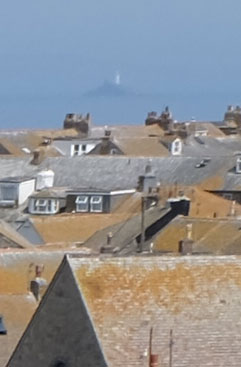 | ||
f5.6, 160 ISO | f5.6, 200 ISO | f5.6, 200 ISO | ||
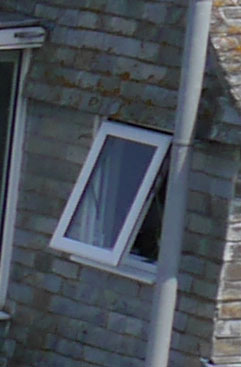 |  |  | ||
f5.6, 160 ISO | f5.6, 200 ISO | f5.6, 200 ISO | ||
 |  |  | ||
f5.6, 160 ISO | f5.6, 200 ISO | f5.6, 200 ISO |
Panasonic Lumix GF6 vs Olympus EP5 vs Fujifilm XM1 quality RAW
To compare real-life RAW performance I shot this scene with the Panasonic Lumix GF6, the Olympus PEN E-P5, and the Fujifilm X-M1 within a few moments of each other using their RAW modes.
To eliminate quality differences due to lens factors I used the Panasonic Lumix G Vario 14-42mm f3.5-5.6 II on both the Lumix GF6 and the PEN E-P5. The X-M1 was fitted with the new Fujinon 16-50mm f3.5-5.6 OIS kit lens.
For the Lumix GF6 and PEN E-P5 the lens was set to its 14mm (28mm equivalent) wide angle setting. At its wide angle setting, the 16-50mm Fujinon lens has an equivalent focal length of 24mm and the X-M1 sensor has a 3:2 aspect ratio compared with 4:3 on the Micro four thirds models. I zoomed in marginally with the X-M1 to produce an equivalent vertical field of view.
All three cameras were set to Aperture Priority exposure mode with the senstivity set manually to the base ISO sensitivity setting.
The image above was taken with the Panasonic Lumix GF6. The GF6 was mounted on a tripod and the stabilisation was turned off. Aperture priority mode was selected with the aperture set to f5.6, which produces the best result from the Lumix kit lens. With the sensitivity set to 160 ISO the camera metered an exposure of 1/1000 at f5.6. At its base 200 ISO sensitivity setting the PEN E-P5 metered an exposure of 1/1250 and, also at 200 ISO, the Fujifilm X-M1 selected 1/900 at f5.6.
The cameras were left on their default settings for this test. The Lumix GF6 RAW file measured 19.7Mb and, as usual, the crops are taken from the areas marked by the red rectangles.
I processed the files from the Lumix GF6 and PEN E-P5 in Adobe Camera RAW using identical settings: Sharpening at 70 / 0.5 / 36 / 10, Luminance and Colour Noise Reduction both set to zero, and the Process to 2012 with the Adobe Standard profile. To further reduce any distracting visual differences between the crops I also set custom white balance to 5500K. These settings were chosen to reveal the differences in sensor quality and isolate them from in-camera processing. The high degree of sharpening with a small radius enhances the finest details without causing undesirable artefacts, while the zero noise reduction unveils what’s really going on behind the scenes.
At the time of testing the Fujifilm X-M1 RAW format wasn’t supported by Adobe Photoshop Camera RAW 8.1.0.43, so I processed the X-M1’s RAF raw file in the supplied Raw File Converter application. I tried as far as possible to produce similar results to the Camera RAW processed files, setting sharpness to exagerrated, turning off all noise reduction, setting the white balance to 5500K and developing the result to a .tif file. While the resulting crops provide a useful idea of what the X-M1 RAW file can produce, it’s not intended for comparison with the Camera RAW processed files, so I’ll confine my comments to the Panasonic Lumix GF6 and Olympus PEN E-P5. I’ll update the X-M1 crops when Camera RAW support becomes available in Adobe Photoshop Camera RAW.
So what about the crops from the GF6 and E-P5? Well, they look strikingly similar with levels of detail and noise that are so closely matched you’d be hard pressed to tell them apart. This confirms that the differences we saw in the JPEG results were due to different in-camera JPEG processing workflows and if you’re shooting RAW, there’s practically zero difference in the quality of the results you’ll get from these two models.
You can see how these models compare at higher sensitivities in my Lumix GF6 Noise results.
Panasonic Lumix GF6 RAW | Olympus PEN E-P5 RAW | Fujifilm X-M1 RAW | ||
 |  |  | ||
f5.6, 160 ISO | f5.6, 200 ISO | f5.6, 200 ISO | ||
 |  |  | ||
f5.6, 160 ISO | f5.6, 200 ISO | f5.6, 200 ISO | ||
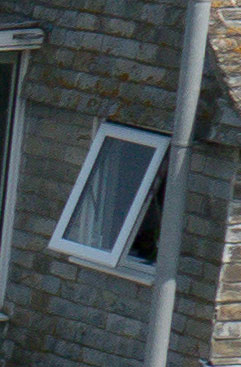 |  |  | ||
f5.6, 160 ISO | f5.6, 200 ISO | f5.6, 200 ISO | ||
 |  |  | ||
f5.6, 160 ISO | f5.6, 200 ISO | f5.6, 200 ISO |
Panasonic Lumix GF6 vs Olympus EP5 vs Fujifilm XM1 Noise RAW
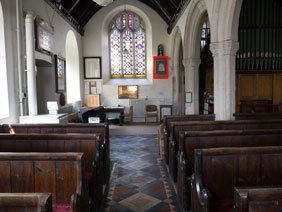
To compare RAW noise levels under real-life conditions, I shot this scene with the Panasonic Lumix GF6, the Olympus PEN E-P5, and the Fujifilm X-M1 within a few moments of each other using their RAW modes at each of their ISO sensitivity settings.
The Lumix GF6 and the PEN E-P5 were fitted with their respective kit lenses and the Fujifilm X-M1 was fitted with the new Fujinon 16-50mm f3.5-5.6 OIS kit lens
For the Lumix GF6 and the PEN E-P5 the lens was set to its 14mm (28mm equivalent) wide angle setting. At its wide angle setting, the 16-50mm Fujinon lens has an equivalent focal length of 24mm and the X-M1 sensor has a 3:2 aspect ratio compared with 4:3 on the Micro Four Thirds models. I zoomed in marginally with the X-M1 to produce an equivalent vertical field of view.
The cameras were set to Aperture Priority exposure mode with the ISO senstivity set manually.
The above shot was taken with the Panasonic Lumix GF6 in Aperture priority mode. The Lumix GF6 RAW file measured 19.8Mb and, as usual, the crops are taken from the areas marked by the red rectangle. At 160 ISO the Panasonic Lumix GF6 selected 1/5 at f5.6. At its 200 ISO base sensitivity the PEN E-P5 metered an exposure of 1/6 at f5.6. I applied -.67EV to the Fujifilm X-M1 to produce an equivalent exposure of 1/6 at f5.6 at 200 ISO. Note the Sun begain to creep into the frame when I was shooting my final shots with the X-M1, hence the illuminated portion to the left side, but it’s still possible to look beyond that to other areas of the frame for a fair comparison with the other models. If I get the chance to try all three models at the same time again in the future, I’ll reshoot this test.
I processed the files from the Lumix GF6 amd PEN E-P5 in Adobe Camera RAW using identical settings: Sharpening at 70 / 0.5 / 36 / 10, Luminance and Colour Noise Reduction both set to zero, and the Process to 2012 with the Adobe Standard profile. To further reduce any distracting visual differences between the crops I also set custom white balance to 4300K. These settings were chosen to reveal the differences in sensor quality and isolate them from in-camera processing. The high degree of sharpening with a small radius enhances the finest details without causing undesirable artefacts, while the zero noise reduction unveils what’s really going on behind the scenes – as such the visible noise levels at higher ISOs will be much greater than you’re used to seeing in many of my comparisons, but again it’s an approach that’s designed to show the actual detail that’s being recorded before you start work on processing and cleaning it up if desired.
At the time of testing the Fujifilm X-M1 RAW format wasn’t supported by Adobe Photoshop Camera RAW 8.1.0.43, so I processed the M-M1’s RAF RAW file in the supplied Raw File Converter application. I tried as far as possible to produce similar results to the Camera RAW processed files, setting sharpness to exagerrated, turning off all noise reduction, setting the white balance to 4300K and developing the results to a .tif file. While the resulting crops provide a useful idea of what the X-M1 RAW file can produce, it’s not intended for comparison with the Camera RAW processed files. So, other than noting that the Fujifilm X-M1 is confined to its non-extended 200-6400 ISO range for RAW shooting, I’ll confine my comments to the Panasonic Lumix GF6 and Olympus PEN E-P5. I’ll update the X-M1 crops when Camera RAW support becomes available in Adobe Photoshop Camera RAW.
As with the outdoor RAW results, there’s little difference between the Lumix GF6 and PEN E-P5 crops, at the lower end of the sensitivity range at least. Up to 800 ISO there are slight quality differences in the crops but the overall levels of noise and the detail recorded looks very similar. At 1600 ISO the Lumix GF6 crop looks to have marginally more colour noise in it than the PEN E-P5 crop and the same is true at 3200 ISO. The colour noise in the GF6 crops gets progressively worse from 3200 ISO up, whereas the E-P5’s sensor manages to keep a lid on it more effectively.
Noise is always going to be a major problem at sensitivities of 3200 ISO and above. But if you do a lot of very low light work and consistently find yourself in the upper regions of your camera’s sensitivity range, for RAW shooting the E-P5 has the advantage here.
Now head over to my Panasonic Lumix GF6 sample images to see some more real-life shots in a variety of conditions.
|
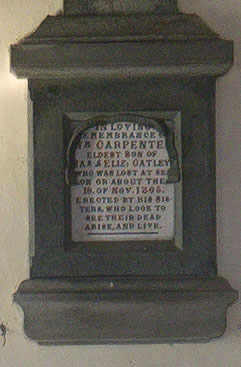

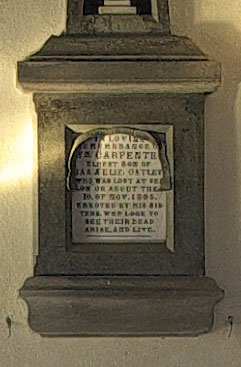


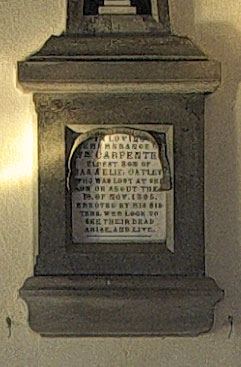


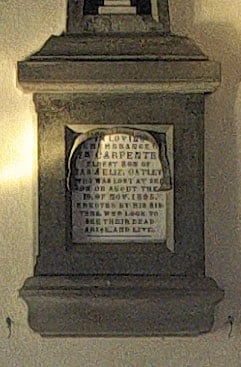


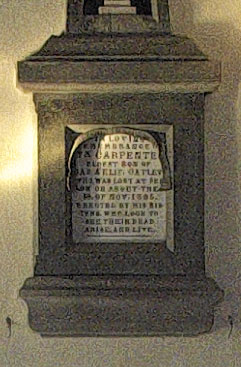


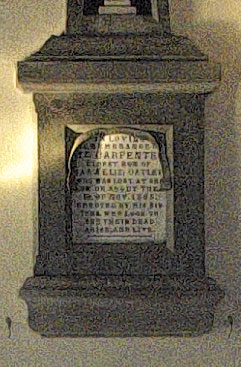
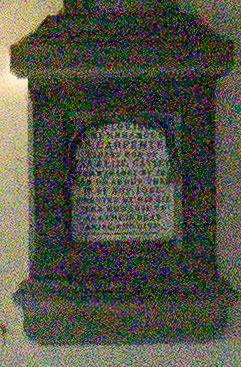


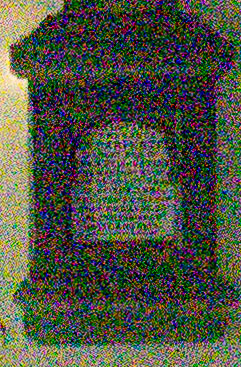
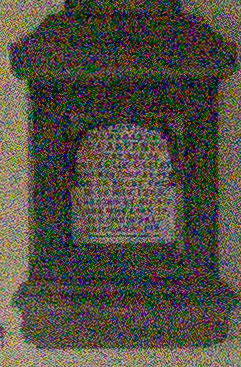


Panasonic Lumix GF6 vs Olympus EP5 vs Fujifilm XM1 Noise JPEG
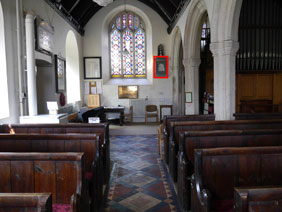
To compare noise levels under real-life conditions, I shot this scene with the Panasonic Lumix GF6, the Olympus PEN E-P5, and the Fujifilm X-M1 within a few moments of each other using their best quality JPEG settings at each of their ISO sensitivity settings; RAW results will follow on the next page.
The Lumix GF6 and the PEN E-P5 were fitted with their respective kit lenses and the Fujifilm X-M1 was fitted with the new Fujinon 16-50mm f3.5-5.6 OIS kit lens
For the Lumix GF6 and the PEN E-P5 the lens was set to its 14mm (28mm equivalent) wide angle setting. At its wide angle setting, the 16-50mm Fujinon lens has an equivalent focal length of 24mm and the X-M1 sensor has a 3:2 aspect ratio compared with 4:3 on the Micro Four Thirds models. I zoomed in marginally with the X-M1 to produce an equivalent vertical field of view.
The cameras were set to Aperture Priority exposure mode with the ISO senstivity set manually.
The above shot was taken with the Panasonic Lumix GF6 in Aperture priority mode. The camera was mounted on a tripod and tonal enhancement features were left on their default settings, i.Dynamic and i. Resolution were turned off and Long Shutter noise reduction was on. On the PEN E-P5 Gradation and Noise reduction were set to Auto and Noise filter was set to standard. On the Fujifilm X-M1, Dynamic Range was set to Auto, Noise reduction, Highlight tone, Shadow tone, Colour, and Sharpness were all set to 0 and Long exposure noise reduction was on. The Lumix GF6 JPEG file measured 7.57Mb and, as usual, the crops are taken from the areas marked by the red rectangle.
At 160 ISO the Panasonic Lumix GF6 selected 1/5 at f5.6. At its 200 ISO base sensitivity the PEN E-P5 metered an exposure of 1/6 at f5.6. I applied -.67EV to the Fujifilm X-M1 to produce an equivalent exposure of 1/6 at f5.6 at 200 ISO. Note the Sun begain to creep into the frame when I was shooting my final shots with the X-M1, hence the illuminated portion to the left side, but it’s still possible to look beyond that to other areas of the frame for a fair comparison with the other models. If I get the chance to try all three models at the same time again in the future, I’ll reshoot this test.
Though both the Olympus PEN E-P5 and Fujifilm X-M1 have 100 ISO settings, these are part of their extended ISO sensitivity ranges, their base sensitivity setting is 200 ISO. So when looking at the table below you should compare the 160 ISO crop from the Lumix GF6 with the 200 ISO crops from the PEN E-P5 and the Fujifilm X-M1. When you do that, you’ll see that there’s very little difference between them in terms of noise, all three produce a clean image with plenty of fine detail and no discernible noise at their base ISO sensitivities.
As you go up the sensitivity scale to 1600 ISO on the Lumix GF6 crops the increase in noise is fairly marginal. As with the outdoor test, the GF6 crops look a tiny bit softer, most probably as a result of processing differences as much as anything else. The 1600 ISO crop does look a little bittier than the PEN E-P5 though, the bottom edge of the memorial panel is patchier and the difference is a little more exagerrated at 3200 ISO. I’d say from 1600 ISO to 6400 ISO the PEN E-P5 has an edge in terms of the way it handles noise and the results, but it’s a slight advantage and not one that’s going to make much of a practical difference. At the high end of the range – 12800 and 25600 neither looks great, but the PEN E-P5 crops are visibly ‘less bad’.
But it’s the Fujifilm X-M1 that’s the clear winner in here. Up to 400 ISO it matches both the Lumix GF6 and PEN E-P5 crop for crop, but from there on up the incremental increases in noise are far less intrusive and the X-M1 sensor retains a lot more detail as a result. By 3200 ISO there’s a least a 1EV difference in noise levels, probably more. You can even just about still read the text in the Fujifilm X-M1’s 25600 crop, which is pretty remarkable.
To find out how much of a role processing plays in keeping noise at bay in these crops take a look at my Panasonic Lumix GF6 RAW noise results page to see just how much noise is present behind the scenes. Or head over to my Panasonic Lumix GF6 sample images to see some more real-life shots in a variety of conditions.
|




